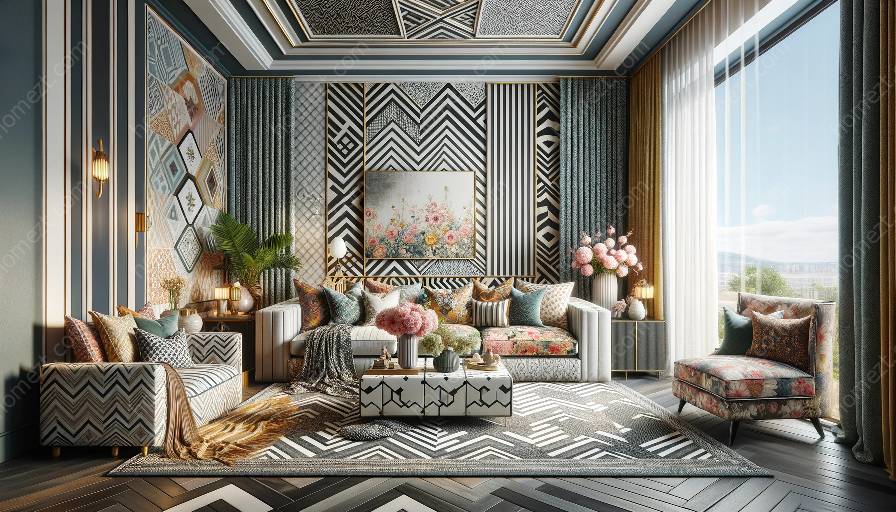Pattern mixing is a popular technique in decorating that adds depth and visual interest to a space. When choosing patterns for mixing, there are several practical considerations to keep in mind to create an attractive and cohesive look. Understanding the scale, color, and style of the patterns, as well as the overall aesthetic you want to achieve, is essential for successful pattern mixing.
Scale and Proportion
Consider the scale of the patterns you want to mix. Mixing patterns of different scales can create visual imbalance, so it's important to ensure that the sizes of the patterns complement each other. For example, pairing a large-scale floral pattern with a small-scale geometric pattern can create a harmonious balance.
Color Palette
When mixing patterns, pay attention to the color palette. Choose patterns with colors that complement each other and create a cohesive look. Consider the dominant color in each pattern and use it as a guide to ensure that the patterns work well together. You can also opt for a neutral base color and add pops of complementary or contrasting colors through the patterns to create visual interest.
Style and Theme
Consider the overall style and theme of the space when choosing patterns for mixing. If you're going for a modern look, opt for geometric or abstract patterns. For a more traditional or vintage aesthetic, floral or damask patterns may be more suitable. Ensuring that the patterns align with the overall style and theme of the space can help create a cohesive and harmonious design.
Texture and Material
In addition to the visual aspects of patterns, consider the texture and material of the fabrics. Mixing different textures and materials can add depth and tactile appeal to the space. For example, pairing a smooth, silky pattern with a textured, nubby fabric can create an interesting contrast that adds dimension to the design.
Combining Patterns
When combining patterns, it's important to vary the type of patterns to avoid overwhelming the space. Mix different types of patterns, such as florals, stripes, and geometrics, to create a balanced and visually appealing look. Consider using one dominant pattern as a focal point and complementing it with smaller, secondary patterns to create depth and visual interest.
Cohesive Theme
To ensure a cohesive theme when mixing patterns, consider using a unifying element such as a common color, shape, or motif. This unifying element can tie the patterns together, creating a harmonious and intentional design. For example, incorporating a consistent color or motif across the patterns can help unify the overall look.
Experiment and Balance
Don't be afraid to experiment with pattern mixing, but be mindful of balance. It's important to strike a balance between boldness and restraint when mixing patterns. Start with small steps, such as mixing patterns within a similar color palette or sticking to a specific theme, then gradually venture into more diverse pattern combinations as you gain confidence.
Consider the Space
Lastly, consider the specific space you are decorating when choosing patterns for mixing. Take into account the size, function, and existing decor of the space. Patterns that work well in a small, intimate space may not necessarily translate to a larger, open area. Understanding the unique characteristics of the space will help you make informed decisions when it comes to pattern mixing.






































